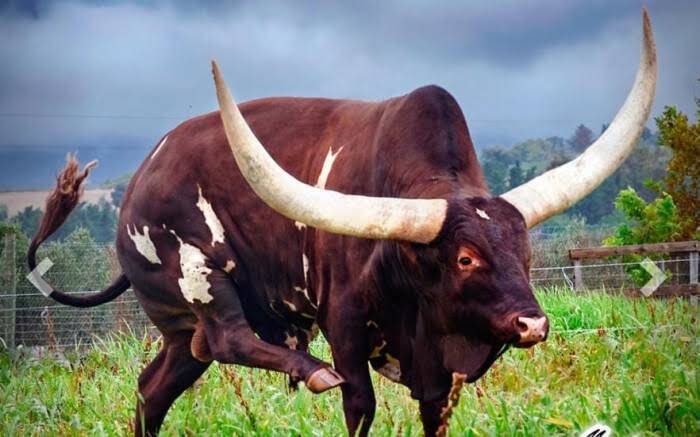Last updated on March 2nd, 2024 at 06:00 pm
Ramaphosa cattle are a unique breed of cattle that originated in South Africa and are well adapted to the harsh environment of the region. They are medium-sized animals with a distinctive black and white colour pattern and a hump on the back of their necks. Ramaphosa cattle are known for their hardy nature and high production of milk and meat.
Anatomy and Physical Characteristics
Ramaphosa cattle are medium-sized animals, averaging around 500-1000 pounds. They have a black and white coloration, and a distinctive hump on the back of their necks. Their average lifespan is between 8-10 years. Their horns are short and pointed, and their hooves are compact and slightly pointed.
Read Also
Origin, Distribution and Adaptability
Ramaphosa cattle originated in South Africa and are now found in various parts of the world. They are well suited to the harsh environment of South Africa and are adapted to thrive in the hot and arid climate of the region. Their hardy nature and high production of milk and meat make them a popular choice for local farmers.
Cost of Ramaphosa Cows
The cost of a Ramaphosa varies depending on their age, size, and gender. Generally, a mature Ramaphosa cow can cost anywhere from $2,000 to $5,000, and a mature Ramaphosa bull can cost between $4,000 to $7,000.
Purpose and Production of Ramaphosa Cattle
Ramaphosa are primarily used for dairy and meat production. They are capable of producing up to 15 liters of milk per day, with a fat content of up to 7%. Their meat is also very tasty and juicy, making them popular among consumers.
In conclusion, Ramaphosa cattle are a unique breed of cattle that originated in South Africa and are well adapted to the harsh environment of the region. They are medium-sized animals with a distinctive black and white colour pattern and a hump on the back of their necks. Ramaphosa cattle are known for their hardy nature and high production of milk and meat. The cost of Ramaphosa cows varies depending on their age, size, and gender, and they are primarily used for dairy and meat production.
Read Also
